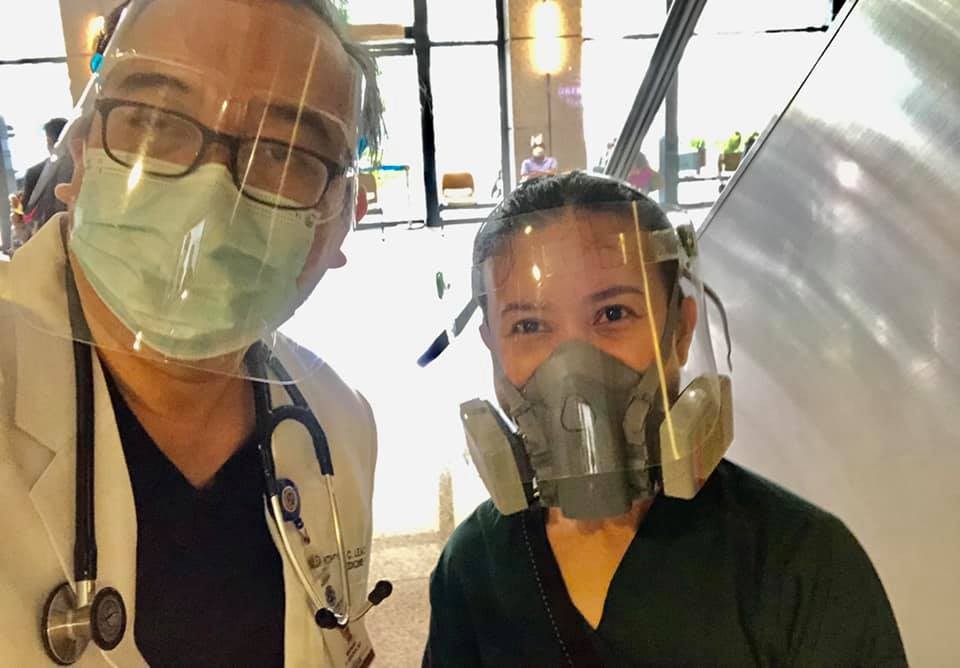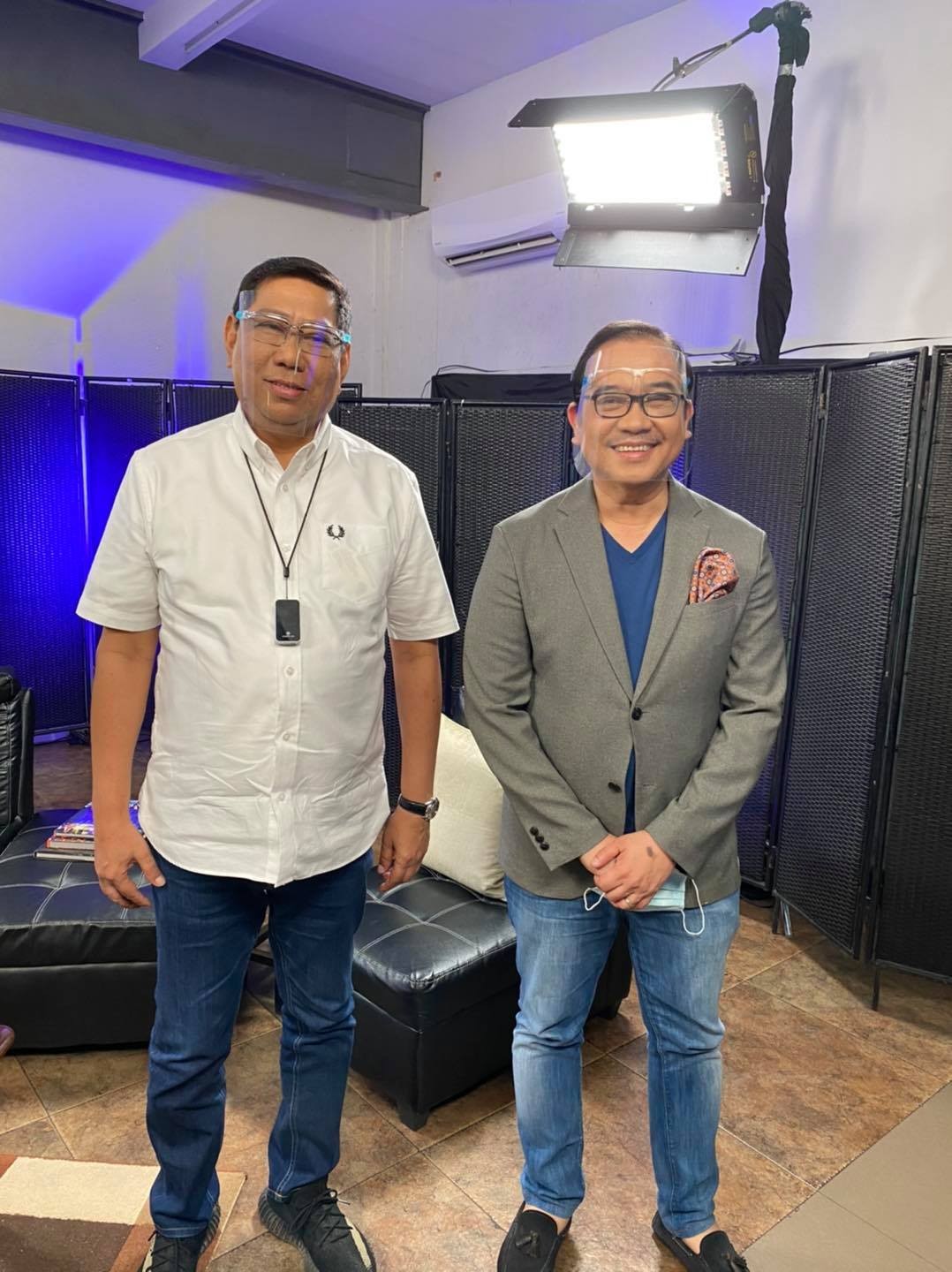As the Philippine economy gradually reopens, how is the government balancing economic recovery with concerns for public health? This event brings together economics, public health, and political science experts to discuss how different sectors are approaching the complex demands of reopening the economy given the huge level of unemployment rate of the country.
But how can we reopen the economy if the coronavirus transmission is not controlled?
Thus, we need to reflect on the things that have caused the delays in flattening the curve. The COVID-19 crisis has taught us painful but valuable lessons. Today, as our fellow healthcare leaders across the world confront COVID-19, we share those lessons and recommendations to strengthen our response. We need to understand fundamental concepts to help us in navigating the community in the war against the ferocious virus.
What went wrong?
Sadly, we were quite slow and tentative in our response. Though we made swift action to temporarily ban public gatherings, close schools and ask the people to stay at home, the measures that really matter, however, were missing in the equation. Looking back, we missed one important task that other Southeast Asian countries did to control the pandemic.
In retrospect, if we closed our borders from Mainland China with a sense of urgency, it could have been a different scenario and perhaps we could have joined other successful countries in flattening the curve in the first 100 days of the pandemic. While Singapore, Taiwan, Vietnam, and Hong Kong took the early initiative on travel restrictions and emergency measures, the Philippines was noticeably late to follow suit. The Philippine government ordered a travel ban only for passengers coming from Wuhan, China specifically on Jan. 31, a day after the first case of COVID-19 was confirmed in the Philippines. A few days later, the travel ban was expanded to the entirety of China, with the delay, as affirmed by the Department of Health (DOH), attributed to a reluctance to upset relations with China.
I think politics should not stand in the way of science and medicine. It was a clear-cut case. I sounded the alarm bells that there will be “chilling effects” to the Philippine economy if an epidemic would happen here.
I warned that “one positive case could lead to an epidemic,” noting that the country also has a weak healthcare system to start with regards to containing the virus. We were simply not ready at that time or perhaps we would struggle facing a huge crisis at any given time given the lack of investments in healthcare in the previous administrations.
In considering closure of our borders to Chinese nationals, concerns about being criticized for overreacting got in the way of a speedy response. There were obviously unnecessary political issues that obstructed the execution of our plan. But when the safety of our people is at stake, authentic leaders must overcome their fears, set aside political biases, and act with no regrets.
Are we successful in slowing down the virus?
Here are some of my observations as an insider during the first 100 days.
Have we tested enough to see the magnitude of the whole problem? At the start, we had only 2,000 test kits mostly relying on donations coming from the World Health Organization (WHO). We know now that mass or expanded testing are mandatory. We can’t diagnose the situation without this important tool.
Searching for a virus without a test is like looking for a needle in a haystack blindfolded.
We lost much time during the initial lockdown in mid-March. We did not look around for reference models, e.g. Korea, Vietnam, Taiwan, etc., on how to address the problem at that time.
Korea’s innovative drive through test centers helped that country detect those with coronavirus and isolate them to reduce its rapid spread. As reliable coronavirus test kits became available, community healthcare workers were trained quickly and Korean government equipped them with protective gear to minimize deaths and outbreaks in hospital facilities.
Did we rapidly scale up testing and bring it as close as possible to our residents’ homes?
We had conflicting issues on the gold standard diagnostic test: the RT-PCR or the rapid antibody tests.
RT-PCR, or real time polymerase chain reaction, is used to detect coronavirus from a nasopharyngeal (nasal secretions) sample, also known as a nasal swab. It can detect early an onset of infection with accuracy. The rapid antibody test, on the other hand, is quicker to get results but not as sensitive and specific as the RT-PCR detect early infection. The WHO urged the mass production and use of testing kits as a basic necessity in combating the pandemic, yet even the DOH on March 20 felt that there was “no need for mass testing yet,” a reminder of how they sorely misread the situation.
It wasn’t until April 14 that the DOH commenced mass testing to rectify their earlier pronouncements, but efforts were still gravely insufficient.
While Korea, Vietnam and New Zealand quickly set up programs to test patients at or near patients’ homes, they also launched a massive public health campaign to educate the public on the symptoms of COVID-19, collected samples from those with illness, reported test results and monitored and referred those who became ill to hospitals.
The country has performed a total of over two million tests to date with a goal of conducting 40,000 to 50,000 tests per day till the end of the year. This development can be attributed to the increase of laboratories that can process COVID-19 tests nationwide. To date, the Philippines has more than a hundred RT-PCR laboratories, from only a solitary lab in February.
We have to push testing especially in areas with high prevalence of COVID-19. The only way for us to effectively combat COVID-19 is to work together with the private sector. The national government can't do this alone; it needs a whole-of-society approach.

It is a shared responsibility: the local government units, the provincial governments, the private companies, and most importantly, individual citizens have to all come together in order for us to effectively manage and eventually stop COVID-19.
The National Task Force is aggressively implementing its expanded testing strategy, which now includes asymptomatic patients, economy workers, and non-medical frontliners, including those in the transport, logistics, media, services, food, tourism, and retail sectors.
How are we doing in so far protecting our health care workers who provide care for the sick?
Initially, we were shocked and saddened with the untimely deaths of our beloved medical frontliners.
Contracting the illness doesn’t only lower the number of workers available to fight the virus, it shatters the spirits of those left on the frontlines. The frontliners have bravely faced the ruthless invisible enemy. Then sometime in July, new cases started to build up and increase the critical utilization rate. In the largest call yet from medical experts to contain the virus last Aug. 1, 80 groups representing 80,000 doctors and half a million nurses rallied that the country was losing the fight against the disease and warned of a collapse of the healthcare system from soaring infections without tighter controls and vigilance.
Have we repurposed maximally our uniformed personnel of government, including the military, to support epidemic response?
There were questions regarding the creation of the NTF (National Task Force for COVID-19) to support the IATF. With all candor and transparency while working with the military generals/cabinet secretaries for the first three months of the lockdown, I would say that they had contributed much to the efforts to thwart the contagion. They provided energy, focus, and direction to the execution of the National Action Plan. However, I believe that the IATF should enlist more public health experts and epidemiologists to provide balance in the membership of the policy-making body. The administration has come under fire for its largely perceived punitive and militaristic implementation of the COVID-19 measures.
“ Our thrust is not to eliminate the coronavirus contagions — but to postpone them. The more we postpone cases, the better our healthcare system can function, the lower the casualties, and the higher the share of the population that will be vaccinated before it gets infected. ”
The task force also provided impetus for the medical community to call for a comprehensive medical and scientific response to the health crisis or the lockdowns imposed would be useless. The group of doctors appealed for health care workers in the provinces and those returning from abroad to help beef up the frontline workforce in the capital, and sought help from universities and medical groups in hiring more doctors, nurses and other medical staff. The medical frontliners are overwhelmed and overburdened; but underpaid and underappreciated; thus, our national leaders should try to understand that they need to provide higher compensation and benefits for our “modern-day heroes.”
What’s the blueprint for recovery? How can we recover immediately from the economic recession?
This is a six-month-old epidemic that has overwhelmed us all. It can’t be eliminated without the help of vaccines. But what we can do at the moment is to reduce its impact. Some countries have been exemplary in this strategy. Sadly, we are the No. 1 country in the Southeast Asian region that has not flattened the curve, together with Indonesia. But there are bright spots.
If we reduce the viral transmission as much as possible, our healthcare system will be able to handle the cases much better, driving the case fatality rate down. And if we spread this over time, we will reach a point where the rest of society can be vaccinated, eliminating the risk together.
Thus, our thrust is not to eliminate the coronavirus contagions — but to postpone them. The more we postpone cases, the better our healthcare system can function, the lower the casualties, and the higher the share of the population that will be vaccinated before it gets infected.

How do we flatten the curve?
Here are some ways:
1. In leading change, we need to move with a sense of urgency. The IATF should form a broad coalition of stakeholders with different expertise to holistically dissect and solve the problems together.
2. The DOH should continue to provide real time and granular data to guide decision-making process per LGU.
3. We need to control viral transmission by intensive social distancing, consistently wearing protective face masks and shields.
4. Health system capacities should be in place to detect, test, isolate, and treat every case and trace every contact.
5. Outbreak risks should be proactively reduced in health facilities and in the communities. Preventive measures should be in place in workplaces, and in schools where it’s essential for people to go. The government should be able to manage the importation risks (returning overseas Filipinos) and the mobility problem of locally stranded individuals (LSIs) to prevent surges threatening Western Visayas and other areas at the moment.
6. Private sector should help out in public health education.
7. The fight to contain COVID-19 must continue and the gains achieved must be sustained. Communities should be fully educated, engaged and empowered to adjust and transition to the new normal.
8. The private sector should step up to the plate and work with the IATF and the NTF to contain this epidemic. We need to enable others to act and motivate the people to share a common responsibility.
We are clearly seeing silver linings lately with gradual reduction of new cases, attainment of R naught (reproductive number) of < 1, and the improvement of the people’s response in changing social behavior.
If the gains are to be built upon, everyone must do his or her part.
We are perpetually inspired by J. K. Rowling’s fictional character, Albus Dumbledore, when he said in the classic Harry Potter flick, “Happiness can be found even in the darkness of times, if one only remembers to turn on the light.”
Nobody is well until everybody is well.
Edited by Büm Tenorio Jr.


